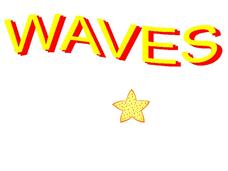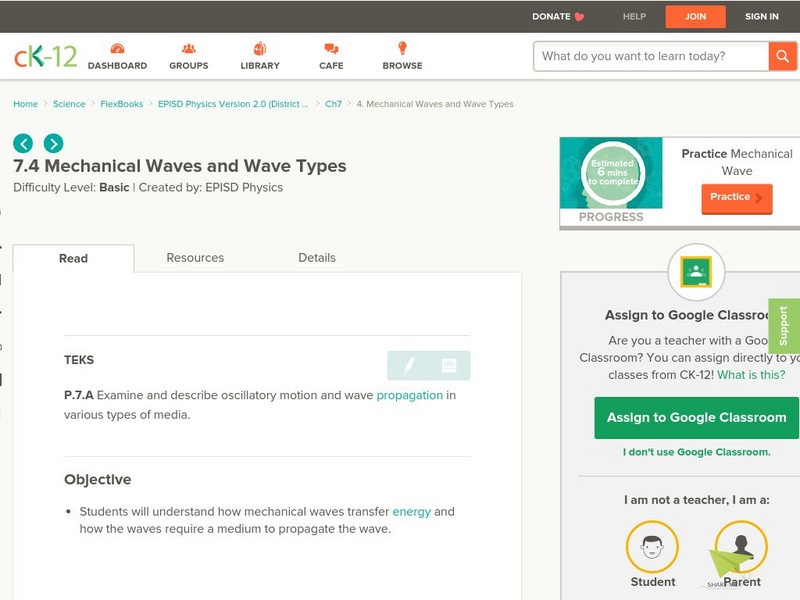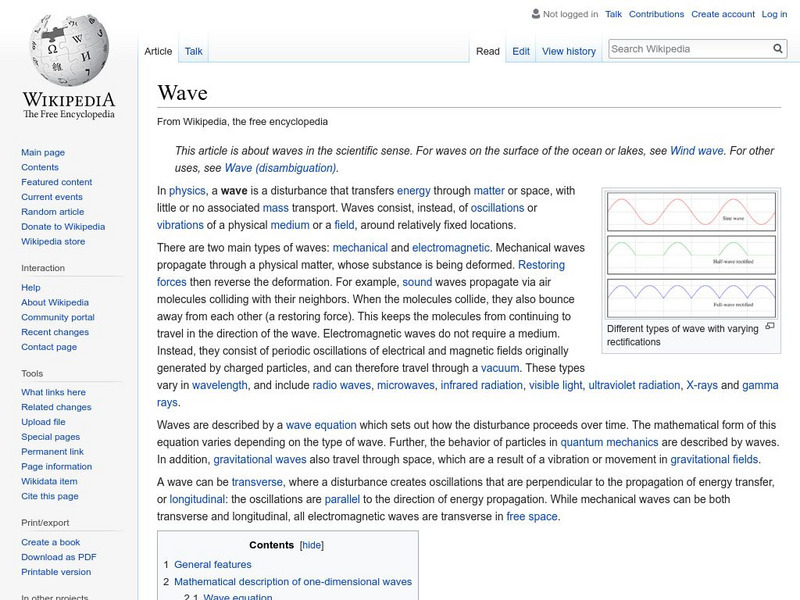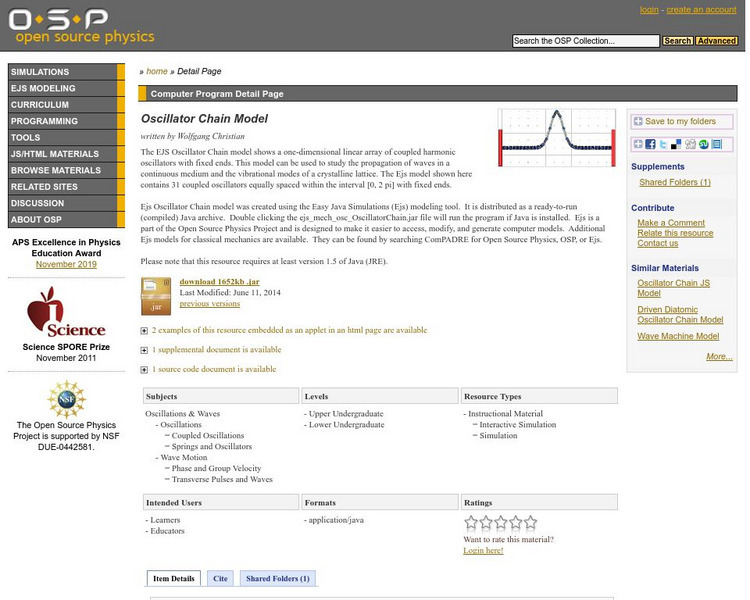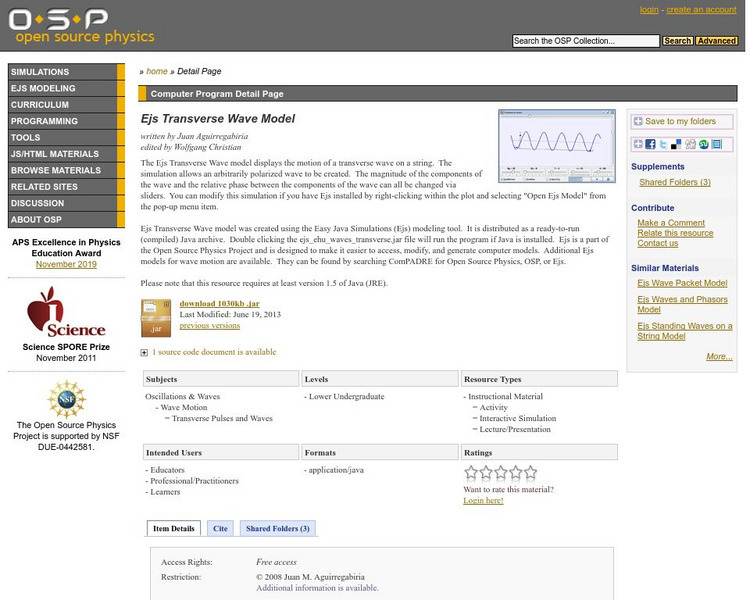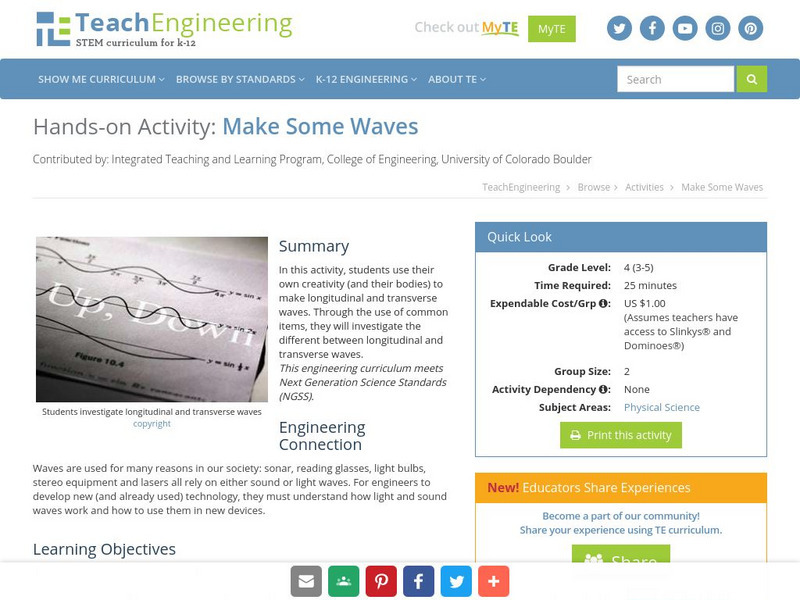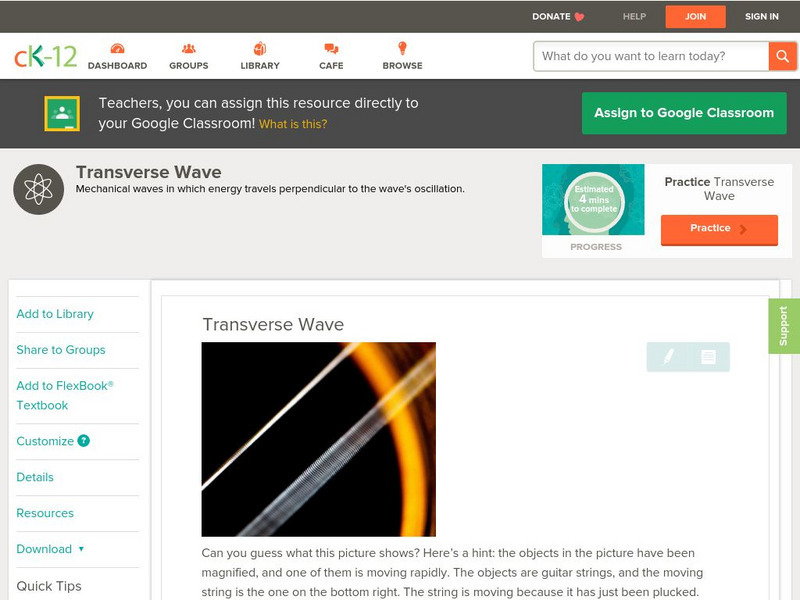Curated OER
Typical Conceptual Questions for Physics I - Waves, Electricity, and Magnetism
This wave and electromagnetism assignment is so thorough, it could be used as a unit exam. The first section of it covers wave concepts. The next section addresses static electricity. There is a section that deals with electric circuits....
Curated OER
Waves
An incredibly colorful PowerPoint presents all the facts and definitions about waves that you could need for beginning physical scientists. There are several useful links to online animations of wave action. This may have been produced...
Acoustical Society of America
Anatomy of a Wave
Pair physical science learners up, and have one describe a transverse wave while the other blindly attempts to draw it. Then reveal an actual diagram and explain the different parts of the wave: crest, trough, wavelength. Though most of...
Curated OER
Wave Terms and Concepts
In this waves worksheet, students define 23 vocabulary words associated with the different types of waves and how waves are measured. Students complete 23 matching terms with definitions and draw the superposition of two waves shown.
CK-12 Foundation
Ck 12: Mechanical Waves and Wave Types
[Free Registration/Login may be required to access all resource tools.] By watching video clips, doing interactives, and reading text, students discover how mechanical waves transfer energy and how the waves require a medium to propagate...
PBS
Pbs Learning Media: Mechanical Waves: Interactive Lesson
Learn about mechanical waves, which transfers energy from one place to another through liquids, gases and solids, with this interactive lesson.
PBS
Pbs Learning Media: Light Waves: Interactive Lesson
Light is all around you, with wavelengths bigger than mountains and smaller than atoms. Learn about light waves, and the ways in which light interacts with matter, with this lesson plan.
University of Kentucky
The Physics and Math of Music
Read about a math research project done by three college students which helps us see physics and math in music. Here's a great approach for integrating curriculum!
Wikimedia
Wikipedia: Wave
An in-depth encyclopedia article from Wikipedia on waves gives a definition for what a wave is. Other content in the article includes a list of examples and characteristics of waves, information about the difference between transverse...
American Association of Physics Teachers
Com Padre Digital Library: Open Source Physics: Oscillator Chain Model
In this simulation a series of coupled oscillators in a chain with anchored ends can be investigated for their wave properties.
American Association of Physics Teachers
Com Padre Digital Library: Open Source Physics: Ejs Transverse Wave Model
A simulation for examining the transverse wave motion of a string. Wave variables can be changed using sliders. Includes suggested activities.
TeachEngineering
Teach Engineering: Make Some Waves
In this activity, students use their own creativity (and their bodies) to make longitudinal and transverse waves. Through the use of common items, they will investigate the different between longitudinal and transverse waves.
TeachEngineering
Teach Engineering: The Energy of Music
Students are introduced to sound energy concepts and how engineers use sound energy. Through hands-on activities and demonstrations, students examine how we know sound exists by listening to and seeing sound waves. They learn to describe...
TeachEngineering
Teach Engineering: Checking the Surf
This lesson introduces the concepts of wavelength and amplitude in transverse waves. In the associated activity, students will use ropes and their bodies to investigate different wavelengths and amplitudes.
TeachEngineering
Teach Engineering: Visible Light and the Electromagnetic Spectrum
In this lesson, the electromagnetic spectrum is explained and students learn that visible light makes up only a portion of this wide spectrum. Students also learn that engineers use electromagnetic waves for many different applications.
CK-12 Foundation
Ck 12: Physical Science: Wavelength
[Free Registration/Login may be required to access all resource tools.] What wavelength is and how it relates to the energy of a wave.
CK-12 Foundation
Ck 12: Physical Science: Transverse Wave
[Free Registration/Login may be required to access all resource tools.] What a transverse wave is, its crests and troughs and what an S wave is.
Discovery Education
Discovery Education: The Phenomenon of Sound Waves
A lab activity on sound waves is presented on this website. Learners will learn about sound waves produced by different objects in this activity. There are also a set of discussion questions and two other variations of the lab exercise.
Texas Education Agency
Texas Gateway: Oscillatory Motion and Waves: Glossary
This is a glossary of terms and definitions used in Chapter 16: Oscillatory Motion and Waves from the AP Physics online text.
CK-12 Foundation
Ck 12: Plix: Types of Waves: Mechanical Wave
[Free Registration/Login Required] Move the points to change the frequency and amplitude of the waves while making the waves transverse or longitudinal according to the labels.
BBC
Bbc: Gcse Bitesize: Why Do Scientists Think That Light and Sound Are Waves?
Light travels as transverse waves and can travel through a vacuum. Sound travels as longitudinal waves and needs to travel through a solid, liquid or gas. Read about the properties of light and of sound, and learn the differences between...



